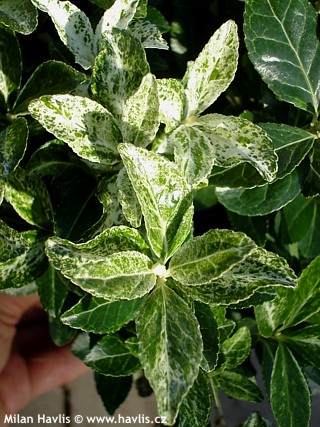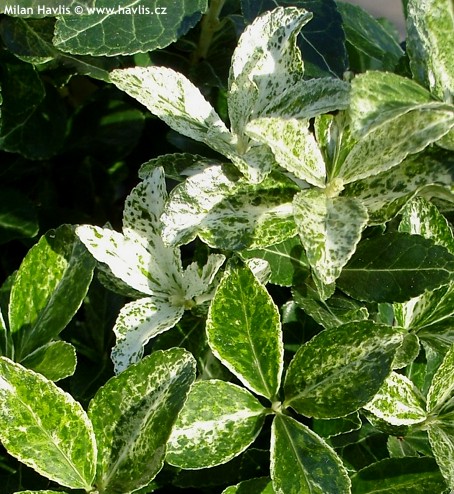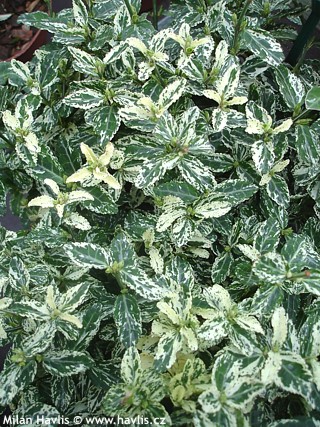Euonymus japonicus 'PIERROLINO'® Japanese spindle
size/type
low or groundcovering,low or groundcovering
usual height
0,5-1m
usual width
0,5-0,8m
leaves
evergreen broadleaf
colour of leaves
flowers
insignificant or non-blooming
location
full sun to shade
soil type
acidic (peaty) to neutral
soil moisture requirements
evenly moist (dislikes drought)
USDA zone (lowest)
6b (down to -21°C)
winter protection
for zone 5+6

for zone 7

categorized
Euonymus
Japanese spindles are evergreen shrubs, or small trees with grafted crowns on short stems. They are very popular in southern countries and where winters are mild. The species has green leaves, but most attractive are varieties with variegated foliage.Description of the plant:
Pierrolino® is a novelty of Japanese spindle from the Netherlands, patented in 2003. It was found by Andianus van Heesben as a naturally occurring mutation among other Japanese spindles. It is a slow growing, low shrub with leaves that emerge almost white, changing to white-mottled later and turning dark green at the bottom of the shrub when mature. Its ultimate height is expected to stop at about 1m. This variety was patented in the US under PP 13,852 and in EU 10611, propagation without licence is prohibited.Japanese spindle responds very well to pruning even on older wood – it always re-sprouts reliably, just fertilize it after cutting into older wood. Cut off long lead and side branches to a size that will help you form a desired shape in future. Then trim or shear it again at the end of July on all sides to achieve a rich and dense plant. The denser foliage, the more resistant it gets against extreme winters.
These plants are quite soil tolerant. They will do well in almost any well-drained soil, preferably moist, but not wet. Grow them on any location from full sun to deep shade but beware that plants with variegated foliage may suffer from winter sun and early spring morning sun. If you can find them a spot with winter shade and basically any portion of summer sunlight you may get in your garden they will be happy. The species with green leaves does not mind winter sun so much. Even if leaves are sunburnt in winter don't worry, the plant will make a lot of new ones in spring. Protect them from extreme winds. If grown in containers overwinter them in a frost-free location with enough light. Experienced hardiness to -21°C (USDA zone 6b).
Last update 25-02-2010
QUICK PRICE OVERVIEW
CURRENTLY SOLD OUT
WANT TO TRY A SIMILAR PLANT?















